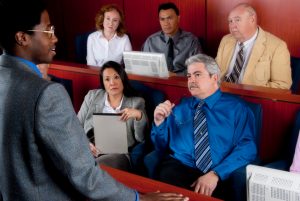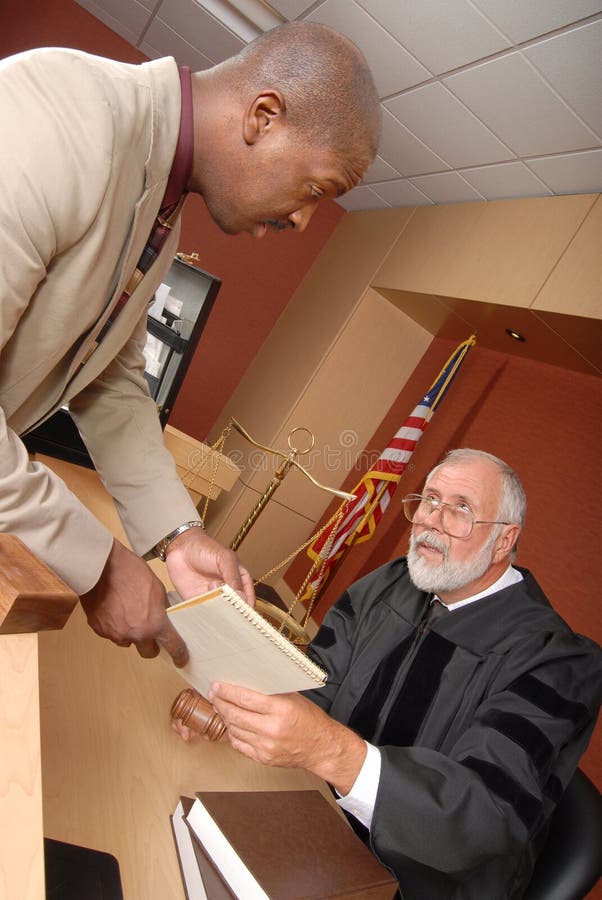The Duty of Aesthetic Help in Effective Trial Presentations: A Guide for Lawyer
The Duty of Aesthetic Help in Effective Trial Presentations: A Guide for Lawyer
Blog Article
Navigating the Intricacies of Trial Presentations: Tips for Seamless Delivery and Engaging Arguments
In the world of lawful process, the art of trial presentation stands as an essential factor of success. The complexities fundamental in trial presentations need a fragile equilibrium of ability, method, and skill.

Understanding Trial Goals
To properly navigate a trial, it is important to have a clear understanding of the purposes that require to be achieved. Before stepping into the court, lawful groups have to specify their objectives and desired outcomes. These objectives serve as directing concepts throughout the test, forming methods and affecting decision-making procedures.
Recognizing test purposes entails a thorough analysis of the case, lawful criteria, and the customer's ideal passions. Trial Presentations. It calls for a thorough examination of the facts, identifying key concerns, and preparing for possible obstacles. By establishing measurable and particular goals, lawyers can customize their debates and discussions to align with the wanted outcomes
Additionally, a clear understanding of trial purposes makes it possible for lawful teams to focus on proof, witnesses, and legal arguments effectively. It permits the advancement of a meaningful narrative that reverberates with the discretionary, reinforcing the general situation discussion.

Organizing Proof Properly
Having a clear understanding of test goals lays the structure for organizing proof successfully in legal procedures. By aligning the discussion of evidence with the wanted outcomes of the test, legal groups can enhance their debates and improve their persuasiveness.
An additional secret component in organizing proof effectively is developing a logical circulation. Offering evidence in a consecutive and coherent way can aid develop an engaging narrative that supports the lawful arguments being made. Furthermore, making use of visual help such as charts, charts, or timelines can better enhance the company of proof and assist in clearing up intricate relationships or sequences of occasions.
Furthermore, guaranteeing that all proof offered is admissible and appropriate to the case is vital. Inadmissible or irrelevant evidence can diminish the strength of the disagreement and possibly damage the reliability of the providing celebration. A precise evaluation and choice process ought to be carried out to include only the most legally sound and impactful proof in the test discussion.
Crafting Convincing Narratives
Crafting compelling stories plays a critical duty in providing persuasive disagreements during lawful proceedings. When creating a narrative for a test presentation, it is essential to establish a clear story that highlights crucial points and links them in a coherent way. By weaving with each other evidence, testament, and legal debates into a convincing and natural narrative, lawful specialists can successfully support for their clients and boost the likelihood of a positive outcome in the court.
Understanding Visual Aids
Reliable use visual help is vital to enhancing the effect and quality of test presentations. Visual help, when made use of strategically, have the power to simplify intricate details, reinforce essential factors, and leave a long-term impression on the judge and jury. To understand aesthetic help in trial presentations, it is important to make certain that they are clear, succinct, and relevant to the arguments being made.
When integrating aesthetic help, such as graphes, timelines, photographs, or graphs, right into a test discussion, it is necessary to maintain them aesthetically appealing yet specialist. The visuals need to enhance the spoken debates, supplying a visual depiction of the information being discussed without overwhelming the audience more information with unnecessary information.
In addition, exercising with the aesthetic aids beforehand is essential to make certain a smooth delivery throughout the test. Familiarizing oneself with the content, changes, and timings of each aesthetic aid can assist preserve the circulation of the discussion and stop technological glitches that might arise.
Delivering Impactful Closing Arguments
A compelling closing disagreement serves as the end result of a trial discussion, enveloping the core story and encouraging the judge and jury towards a positive decision. Begin by outlining the major arguments that support your customer's position, stressing why the proof provided throughout the test supports your narrative.
Furthermore, incorporating emotional allure can even more reinforce your closing disagreement. Ultimately, a well-crafted closing disagreement must leave a lasting impression, engaging the judge and court to rule in your client's support.
Final Thought
To conclude, mastering test discussions entails comprehending purposes, arranging proof, crafting stories, making use of visual aids, and supplying impactful closing debates. By implementing these strategies properly, legal representatives can present their case perfectly and make compelling arguments in the court. It is important to navigate the intricacies of test presentations with precision and skill to attain success in legal process.
By aligning the presentation of proof with the preferred end results of the trial, legal teams can enhance their arguments and other boost their persuasiveness (Trial Presentations). To grasp aesthetic help in trial presentations, it is vital to make sure that they are clear, concise, and pertinent to the debates being made
A compelling closing disagreement offers as the end result of a test presentation, encapsulating the core story and encouraging the judge and check this site out court towards a desirable choice. Begin by describing the major debates that support your customer's position, stressing why the evidence presented throughout the trial sustains your story.In final thought, mastering test presentations entails recognizing objectives, organizing proof, crafting narratives, using aesthetic help, and delivering impactful closing disagreements.
Report this page